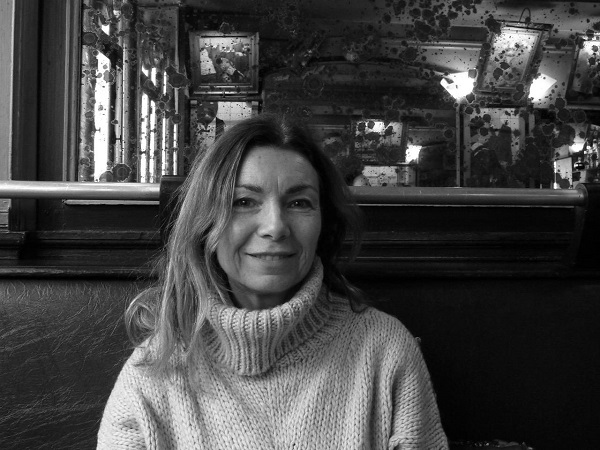«When I read Sara Varon’s graphic novel Robot Dreams, I devoured it. I loved it so much, and in the end, it even moved me. The characters are anthropomorphic and the emotions very human, similar to those we can all experience: that’s why I decided I could make an animated film for the first time» recounts the award-winning Spanish director Pablo Berger (born in 1963) about his film Robot Dreams (2023). The truly astonishing film opened the Cannes Film Festival in 2023 and was nominated for the 2024 Oscars in the animation category. Recently released in Italian theaters, distributed by I Wonder, it is a must-see for animation enthusiasts, cinephiles, and general audience because it speaks to everyone.

Pablo Berger, “Robot Dreams – My Robot Friend”, Spain/France, 2023, 102 min, ph. credits Arcadia Motion Pictures, courtesy I Wonder Pictures
Pablo Berger is the author of various films and is considered a cult director after the black-and-white horror film Blancanieves (2012), which reinvented the Snow White fairy tale, and Abracadabra (2017), a fantastic and surprising comedy set in Madrid. Robot Dreams, a Spanish-French co-production, is set in a nostalgic 1980s New York and has the charm of 2D cartoons with beautiful images. It’s a universal, tender and ironic story about friendship and the loss of friends along the way, created without dialogues, only with extraordinary music and sound effects. The protagonist is Dog, a single Manhattan dog without friends, living a typically metropolitan lifestyle. The Manhattan we see is vibrant and diverse, the neighborhoods recognizable, such as the East Village with its blocks, streets and shops depicted with many period details, almost photographic. Dog feels lonely in his daily routine and decides to buy a robot to have someone to keep him company. The robot is friendly, follows him everywhere, curious to experience everything possible, and Dog’s daily life takes off with emotions and pleasant adventures for two. We see them, for example, skating and dancing together on rollerblades in Central Park or sitting in the evening on the famous bench near the Brooklyn Bridge, an explicit reference to Woody Allen’s film Manhattan.

Pablo Berger, “Robot Dreams – My Robot Friend”, Spain/France, 2023, 102 min, ph. credits Arcadia Motion Pictures, courtesy I Wonder Pictures
The complex work of the technical and artistic team, with live-action professionals, is tangible even in the lively background scenes never still as in other animated films, offering a portrait of the Big Apple with its mix of cultures and ethnicities, realistic characters who move and interact, with chic uptown allure and creative downtown looks like jazz musicians and street artists such as Basquiat. Pablo Berger explains that the film is inspired by the Franco-Belgian comic book graphic style and particularly by Hergé, the author of Tintin, and by the great silent cinema by Charlie Chaplin and Buster Keaton. «My love for cinema is largely due to comics. As a director, writing stories without dialogues is both a great challenge and an immense pleasure» says Berger. «For the essential part of Robot’s dreams, which are delirious, full of surprises and Freudian when it searches for its friend Dog, I had Little Nemo (1905) by Winsor McCay as a reference».

Pablo Berger, “Robot Dreams – My Robot Friend”, Spain/France, 2023, 102 min, ph. credits Arcadia Motion Pictures, courtesy I Wonder Pictures
The artistic direction was entrusted by the director to the excellent José Luis Algreda, who, with a team of twenty artists, studied and developed concepts, characters, backgrounds, and color scripts. Robot Dreams is a tribute to the metropolis where the director lived for a decade precisely in those years and on which he conducted many photographic researches, not only to capture its architectural charm but also to show the fascinating jungle of New Yorkers, thousands of extras, many of them perfectly recognizable to a keen and attentive eye. The music is by Alfonso de Vilallonga, his long-time collaborator, who composed delicate melodies, jazz pieces and urban sounds in an exemplary way. Sound and music editing is by the very talented music editor Yuko Harami, his longtime collaborator and life partner. Among all the musical themes selected by Yuko, the irresistible song September by Earth, Wind, and Fire triumphs, magically taking us back to the fabulous 1980s.
Info:

Manuela Teatini, film maker and journalist, focuses on visual arts, in particular cinema, photography and contemporary art. She has written freelance for years with VOGUE, Uomo VOGUE, ELLE and other cinema, art and new trend magazines. She is the author and director of the docufilms “ART BACKSTAGE. La passione e lo sguardo” (2017),” MASSIMO MININI. Story of a Gallerist “(2019),” GIOVANNI BOLDINI. Il Piacere. Story of the Artist” (2021) awarded at the Terra di Siena International Film Festival 2021.






Steven
29 April
Just a quick correction: Sound Design was by Fabiola Ordoyo, and mix by Steven Ghouti. Yuko Arami was the music supervisor.